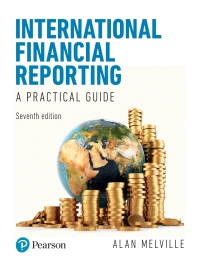Prentiss plc operates a defined benefit pension plan and prepares financial statements to 31 March each year.
Question:
Prentiss plc operates a defined benefit pension plan and prepares financial statements to 31 March each year. The financial statements for the year to 31 March 2019 showed that the present value of the defined benefit obligation on 31 March 2019 was £140m and the fair value of the plan assets on that date was £147m. The following information relates to the year to 31 March 2020:
(i) The company made contributions of £18.4m into the plan. Employee contributions were £7.3m.
(ii) Benefits paid in the year were £19.6m.
(iii) The return on plan assets (before deducting interest income) was £5.9m.
(iv) The present value of the current service cost for the year is estimated at £19.2m.
(v) The interest cost for the year was £9.8m and interest income was £10.3m.
At 31 March 2020, the company's actuary estimated that the present value of the defined benefit obligation was £158m. The fair value of plan assets was £159m.
Required:
(a) Identify the main difference between a defined benefit pension plan and a defined contribution pension plan.
(b) Explain the terms "defined benefit obligation" and "current service cost" in relation to defined benefit pension plans. Also explain why the amounts of these items can only be estimated.
(c) Explain the terms "interest cost" and "actuarial gains and losses".
(d) Calculate the defined benefit expense which should be shown in the company's statement of comprehensive income for the year to 31 March 2020. Explain why the amount of this expense is not equal to the £18.4m contributed by the company during the year.
(e) Calculate the defined benefit asset or liability which should be shown in the company's statement of financial position at 31 March 2020. Reconcile this amount to the equivalent amount at 31 March 2019.
Step by Step Answer:






